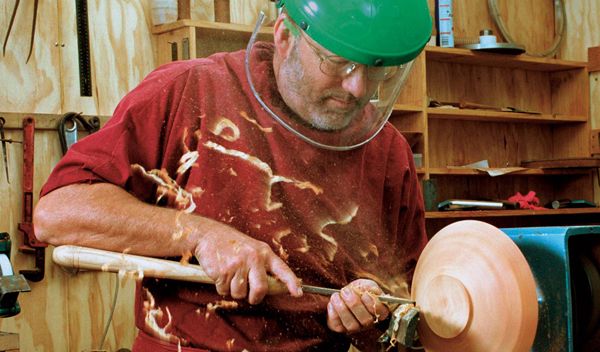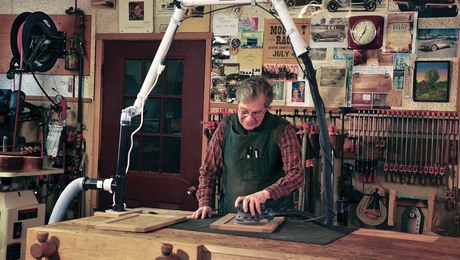Scrapers refine turned surfaces
Some experts say don't use them, but scrapers clean up ridges left by gouges and greatly reduce sanding time
Synopsis: If used properly in wood turning, a scraper will limit the amount of sanding required. In this article Richard Raffan shares his tips for using scrapers to smooth surfaces on faceplate work and when hollowing end grain. Raffan details his methods for turning convex curves, concave curves, and corners. Rich illustrations detail how to apply leverage on both external and internal scraping cuts to achieve smooth results. This article also explains the intricacies of square scrapers, skewed scrapers, and spear-point scrapers. Also, find scraper sharpening tips.
Within minutes of venturing into the workshop on the first day of my wood-turning career, I was initiated into one of the great myths and practices of wood turning. With a twinkle in his eye, the boss said, “You might have heard that real turners don’t use scrapers—but we do in this workshop. It makes life a lot easier.”
In the wonderful but sometimes bitter world of wood turning, those of us who use scrapers often are maligned and dismissed as inept by the cutting-tools-mustbe-used-at-all-times brigade. This myth appears to have arisen in the late 1960s and seems to have come from a popular woodturning author. The advice must have held back thousands of would-be turners who thought they would be breaking some divine regulation by even so much as looking at a scraper. Some wood-turning teachers even advertise the fact that no scrapers are used in their workshops. Don’t they know how? Or are they too blinkered to try? It would be comical if it wasn’t so sad.
I am certain the origin of this myth that real wood turners don’t use scrapers lies with spindle turners who do indeed use only gouges, chisels and parting tools, except in some highly specialized areas involving very hard woods and intricate detail, such as in the manufacture of boxwood chess pieces. Scraping techniques rarely produce good surfaces on spindles, but they excel for end-grain hollowing and faceplate work.
Scrapers refine gouge-cut surfaces on faceplate work (where the grain is aligned 90° to the lathe axis) and surfaces within end-grain hollows such as goblets or boxes. Remove the bulk of the waste using gouges, then finish with scrapers if need be. Even in expert hands, gouges leave a slight groove, which must be removed for a truly smooth surface.
To burr, or not to burr
The edge I commonly use has a slight burr straight off an 80-grit grinding wheel. I find this edge to be ideal for general use, especially for the relatively heavy cuts that sweep across the inside curve of a bowl.
From Fine Woodworking #148
For the full article, download the PDF below:
Fine Woodworking Recommended Products

Starrett 12-in. combination square

Sawstop Miter Gauge

Veritas Micro-Adjust Wheel Marking Gauge





















Log in or create an account to post a comment.
Sign up Log in